Welcome to your guide on starting to plant a garden! If you’re a beginner looking to dip your toes into gardening, we’ve got you covered with some helpful tips to get started. The process of starting a garden may seem daunting, but with a little planning and patience, you’ll soon be on your way to enjoying fresh produce from your own backyard.
Key Takeaways:
- Choose a sunny location with well-draining soil for your garden.
- Start small with easy-to-grow vegetables like lettuce, green beans, radishes, tomatoes, and zucchini.
- Know your hardiness zone and frost dates to ensure proper planting.
- Prepare your soil with organic matter and ensure proper drainage.
- Use the right tools and supplies and familiarize yourself with gardening terms.
- Water your garden correctly and address issues like pests with organic remedies.
Choosing the Right Location for Your Garden
The first step in starting your garden is to pick a sunny location with well-drained soil and minimal wind. It’s important to choose a spot that receives 6 to 8 hours of direct sunlight per day, as this is necessary for most vegetables to grow and thrive. Make sure the soil drains well and doesn’t stay wet, as wet soil can lead to rotted roots. Additionally, avoid planting in windy locations that could knock over plants or hinder pollinators.
The quality of your soil is also crucial for your garden’s success. Nutrient-rich soil is best, so if your soil is thin and nutrient-poor, consider adding organic matter to help improve plant growth. Compost, aged manure, and leaf mold are all excellent options for improving soil quality.
For beginners, starting with a small garden is recommended. A 10’x10′ plot is a great place to start for planting vegetables, and if using raised beds, a 4’x4′ or 4’x8′ size is suitable. When selecting vegetables to grow, choose easy and productive varieties, as well as ones that your family enjoys eating. It’s also essential to consider your region’s growing conditions, such as hardiness zone and frost dates. This will help you decide on what and when to plant.
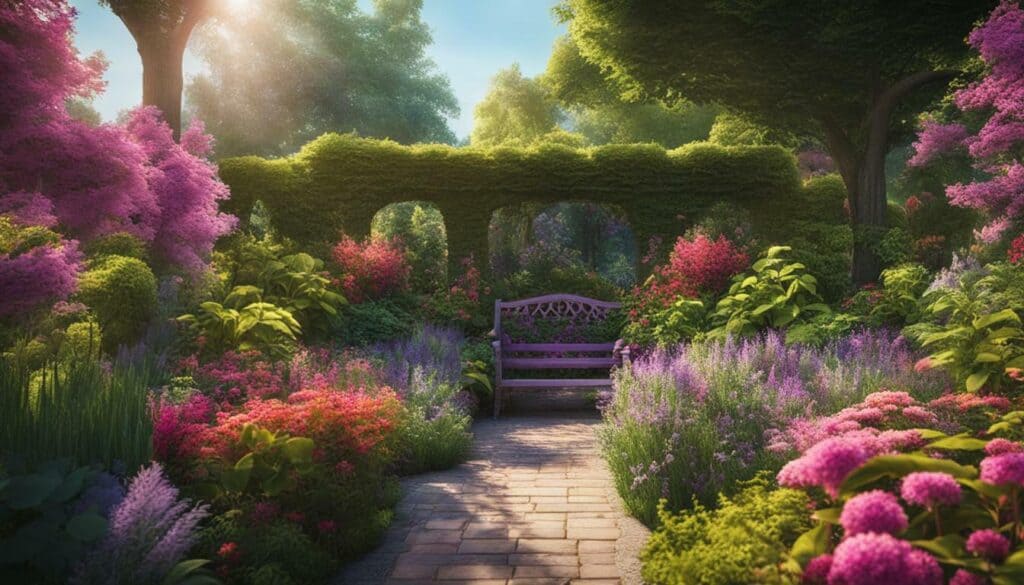
By following these tips and using the right tools and supplies, beginners can confidently start their own gardens and enjoy the rewards of beautiful plants and tasty produce.
Starting Small and Choosing What to Grow
When starting out, it’s wise to begin with a small garden and only grow what you know you and your family will enjoy eating. A 10′ x 10′ garden or a 4′ x 4′ or 4′ x 8′ raised bed is the perfect size for beginners. If you’re feeling more ambitious, a 12′ x 24′ garden is probably the biggest a first-timer should attempt.
When selecting vegetables to grow, pick easy and productive ones. Some recommended vegetables for beginners include lettuce, green beans, radishes, tomatoes, zucchini, peppers, beets, carrots, chard, spinach, kale, and peas. Consider what you and your family like to eat, and be realistic about the amount of vegetables you can consume. Also, consider the availability of certain vegetables at your local grocery store.
It’s important to consider your growing conditions as well. Choose plants that match your climate and growing zone. Know your frost dates and plant accordingly, as planting too early or late can harm your plants. Do your research and choose varieties that will grow well in your region and available space.
Starting small and choosing what to grow wisely will give you the opportunity to learn and improve your gardening skills gradually. This approach will also help you avoid getting overwhelmed by a large garden and losing interest. Remember, with persistence and patience, you’ll soon enjoy the benefits of homegrown vegetables and beautiful flowers.
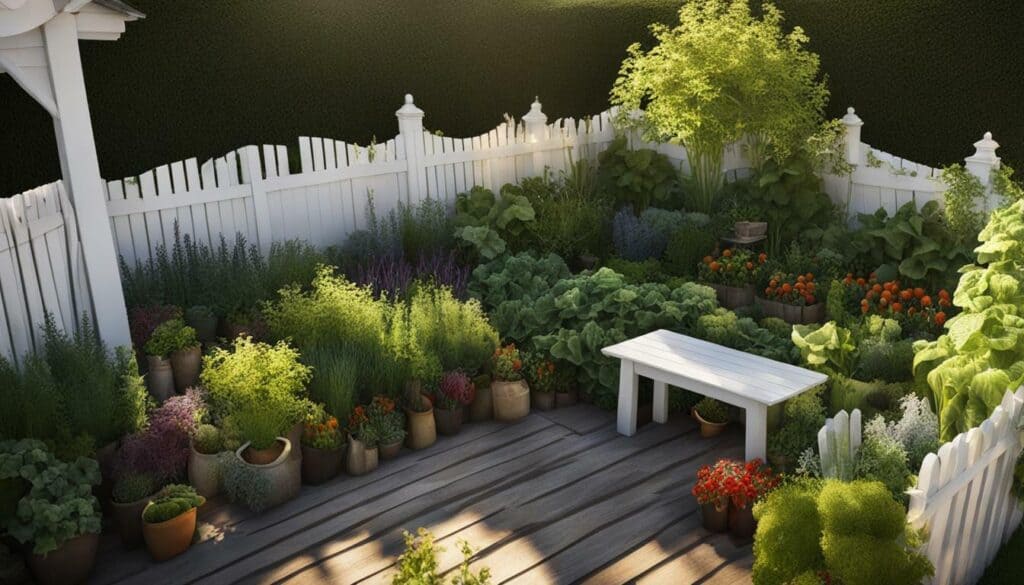
Next, we’ll consider another important aspect of gardening – selecting the right location for your garden.
Considering Grocery Store Availability and Local Climate
Before choosing which vegetables to plant, take into consideration the availability of those vegetables at your local grocery store and the plants that grow best in your specific area. This will ensure that you select the right vegetables that are more likely to thrive in your garden.
It is important to choose a sunny location with well-draining soil for optimal plant growth. Starting small and planting vegetables that are easy to grow is also recommended. You can grow lettuce, cucumbers, radishes, and herbs in a small garden, as they require minimal space and are easy to grow.
Another factor to consider is the climate of your region. Some vegetables grow better in cooler temperatures, while others prefer the warmth. Selecting plants that match the growing conditions of your region can make a big difference in the productivity of your garden.
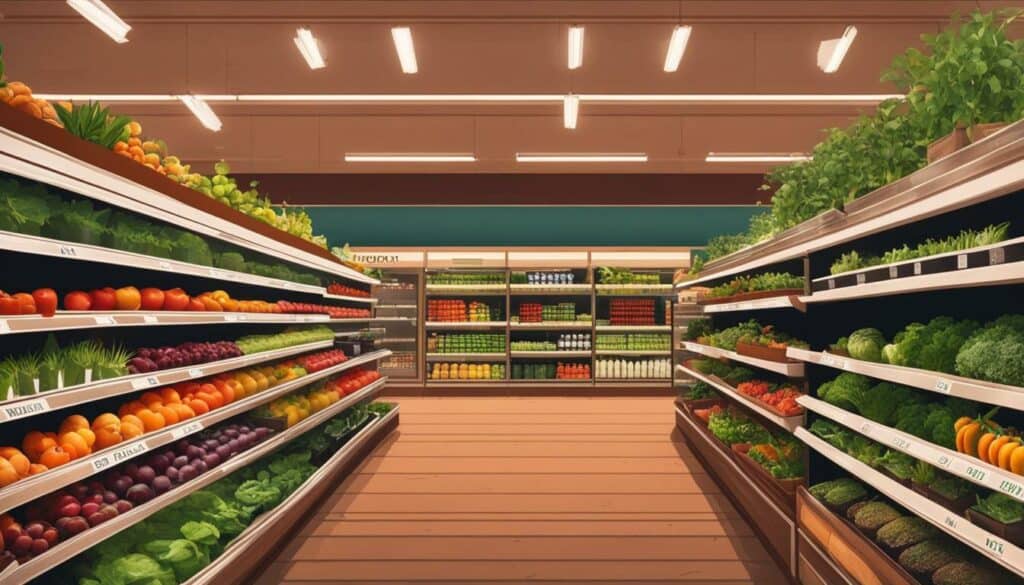
For a more comprehensive guide for beginners, you can refer to a gardening book or website. These resources can provide information on soil preparation, plant care, and watering techniques. By gathering this information and considering grocery store availability and climatic conditions, you can make informed choices about what vegetables to grow in your garden.
Planting at the Right Time
To ensure successful growth, it’s essential to plant your vegetables at the right time, taking into account whether they are cool-season or warm-season plants. Cool-season vegetables like broccoli, lettuce, and spinach should be planted in early spring or late summer, while warm-season vegetables like tomatoes, peppers, and cucumbers should be planted after the last spring frost.
When selecting a location for your garden, make sure it receives 6 to 8 hours of direct sunlight per day and has well-draining soil. The size of your garden depends on your needs and experience level, but it’s better to start small and expand as you gain confidence.
Choose vegetables that are easy to grow and suitable for your climate. Consider your frost dates to avoid planting too early or late in the season. Knowing your hardiness zone can also help you select the right plants for your area.
Understanding basic gardening terms and having the right tools and supplies is essential. Taking care of your plants throughout the growing season and using high-quality seeds are crucial for a successful garden. By following these guidelines and being persistent, you can enjoy the rewards of a beautiful garden and bountiful harvest.
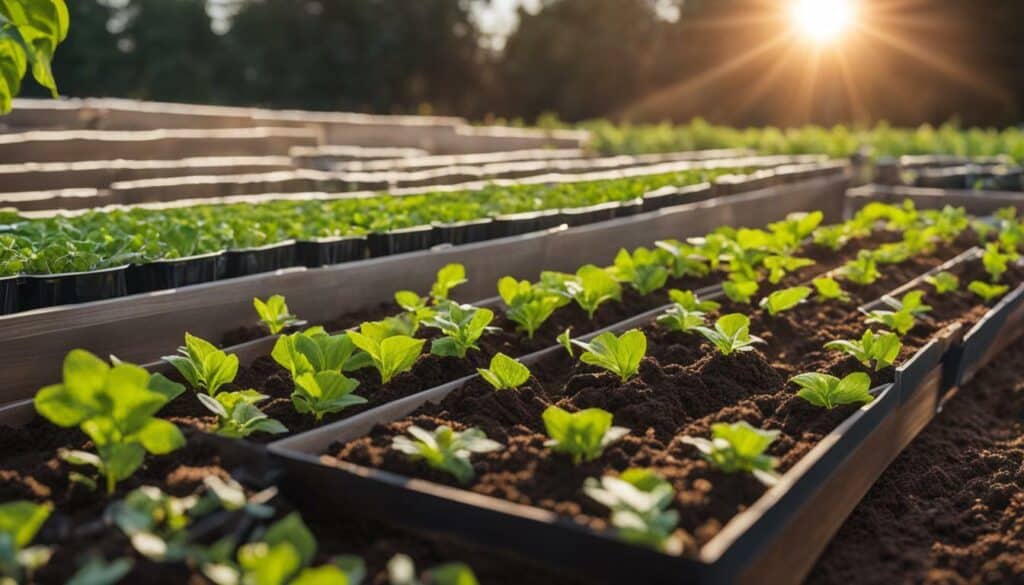
Using Quality Seeds and Understanding Your Hardiness Zone
To set yourself up for success, it’s crucial to use high-quality seeds and familiarize yourself with your hardiness zone, which will help you choose the best plants for your garden. Quality seeds can make all the difference in the success of your garden. Look for seeds from reputable sources, ensuring that they are fresh and have been properly stored. Using high-quality seeds can increase your chances of a healthy crop and a bountiful harvest.
Another important factor to consider when starting a garden is your hardiness zone. The United States Department of Agriculture (USDA) has created a map of hardiness zones based on the average minimum winter temperature in each region. Understanding your hardiness zone can help you choose the best plants for your area and ensure they will thrive in your specific climate. You can easily find your hardiness zone by using the USDA Hardiness Zone Map or contacting your local Cooperative Extension Service.
By selecting plants that are well-suited to your hardiness zone, you can avoid planting varieties that may be prone to disease or struggle to grow in your area. Additionally, starting with young plants rather than seeds can give you a head start on the growing season and increase your chances of success.
When it comes to vegetable gardening, success largely depends on selecting the right vegetables for your growing conditions and hardiness zone. Contacting your state’s Cooperative Extension Service can provide guidance on which plants thrive best in your specific area. Choosing the right vegetables for your garden and using high-quality seeds can ensure that you have a bountiful harvest and a rewarding gardening experience.
Remember, a little planning and preparation can go a long way in the success of your vegetable garden. Take the time to select the right vegetables for your growing conditions, choose high-quality seeds, and familiarize yourself with your hardiness zone. These simple steps can ensure that you will have a successful and bountiful harvest.
Knowing Your Frost Dates
Understanding your frost dates is essential to avoid planting your vegetables too early or too late in the season, potentially damaging their growth. Frost dates vary by location and can be easily found online or by contacting your local extension office. Knowing these dates can help you plan out your planting schedule accordingly.
It’s important to note that cool-season plants, such as broccoli and lettuce, can be planted outdoors before the last frost date, while warm-season plants like tomatoes and peppers need to be planted after the last frost date to avoid damage. Keep an eye on the weather in case of a late frost.
In addition to knowing your frost dates, pay attention to your local climate and weather patterns. This information can help you determine which plants are best suited for your area and when to plant them.
Overall, understanding your frost dates is just one aspect of successful gardening. By considering all the tips and tricks for starting a garden, you’ll be well on your way to growing your own fresh produce and enjoying the many benefits of gardening.
Essential Gardening Tools and Terminology
As you embark on your gardening journey, it’s important to start with basic gardening tools and gradually expand your collection as your garden grows. Some essential tools for starters include a shovel, trowel, garden hose, gloves, and a watering can. These tools will help you prepare your soil, plant your seeds, and maintain your garden throughout the growing season.
In addition to tools, understanding gardening terminology can be helpful in cultivating a successful garden. Knowing the difference between soil types, such as sandy or loamy, can help you choose the right plants for your garden. Understanding plant propagation, such as starting seeds indoors and transplanting seedlings, can also help you expand your garden.
Here are some common gardening terms you should know:
| Term | Definition |
|---|---|
| Compost | A mixture of decomposed organic matter used to enrich soil |
| Fertilizer | A substance that provides nutrients to plants |
| Hardiness Zone | A geographic area in which plants are most likely to thrive, based on climate and temperature |
| Seedling | A young plant grown from a seed |
| Soil pH | The level of acidity or alkalinity in soil |
By familiarizing yourself with basic gardening tools and terminology, you’ll be well on your way to becoming a successful gardener. Remember, starting a garden should be an exciting process, and persistence is key to achieving beautiful plants and produce.
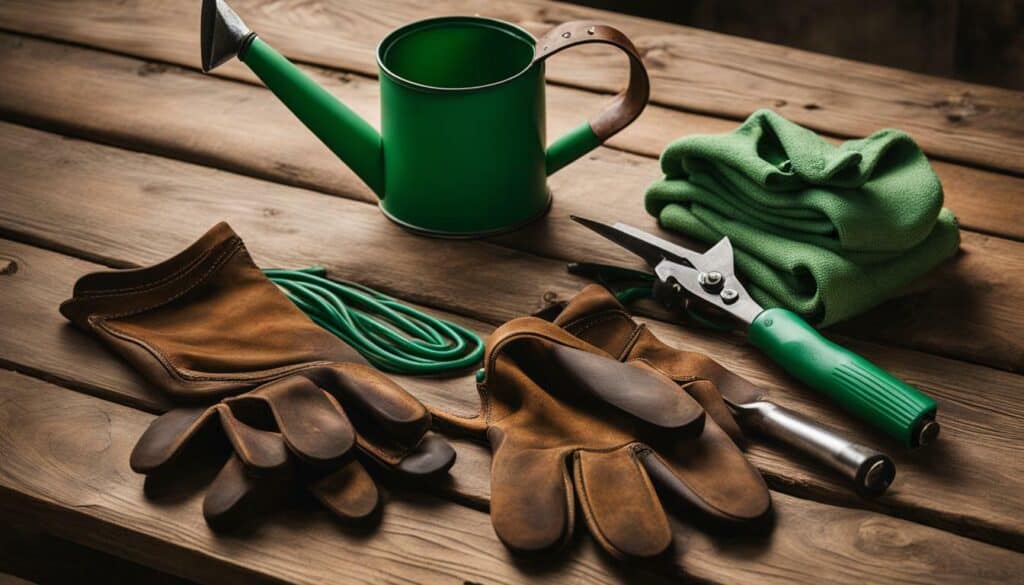
Soil Preparation and Caring for Seedlings
Before planting, it’s crucial to prepare your soil by amending it with organic matter and assessing its pH and drainage, ensuring optimal growing conditions for your garden. Start by testing your soil with a soil kit, available at most garden centers or online retailers. Once you know your soil’s pH and drainage, you can amend your soil by adding organic matter such as compost or manure to improve nutrient availability and water-holding capacity.
Seed starting is a great way to get a head-start on the growing season, and caring for seedlings is essential to ensure your plants are healthy and robust before transplanting. When starting seeds, use a seed-starting mix to provide the right balance of nutrients and water-holding capacity. Keep seedlings moist and ensure they receive adequate light, either through a sunny window or grow lights.
Caring for seedlings also involves hardening them off before transplanting. This process involves gradually exposing the seedlings to outdoor conditions over several days, such as placing them outside for a few hours each day while gradually increasing exposure time.

In addition to amending soil and caring for seedlings, proper watering techniques are crucial for plant health. Water your plants thoroughly but infrequently, allowing the soil to dry out slightly between watering. Mulching your garden can also help retain moisture and regulate soil temperature, reducing the need for frequent watering.
By preparing your soil and caring for your plants properly, you can ensure a bountiful harvest and beautiful garden all season long. With patience and persistence, even beginner gardeners can have a successful and rewarding gardening experience.
Considering Herb Gardens and Container Gardening
If you’re looking to maximize your gardening potential, consider starting an herb garden or exploring container gardening, which are perfect options for limited space or specific preferences.
When starting a garden, it’s better to start small and grow what you know you and your family will eat. A 10′ x 10′ garden is a manageable size for beginners, or you could try a raised bed of either 4′ x 4′ or 4′ x 8′. If you want to go bigger, a 12′ x 24′ garden is probably the maximum size for a first-timer.
Choosing the right vegetables is also crucial. As a beginner, it’s best to start with easy vegetables that are also productive. Lettuce, green beans, radishes, tomatoes, zucchini, and peppers are all great options. Consider what your family likes to eat and be realistic about how many vegetables you’ll actually consume.
| Herb Garden Tips | Container Gardening Tips |
|---|---|
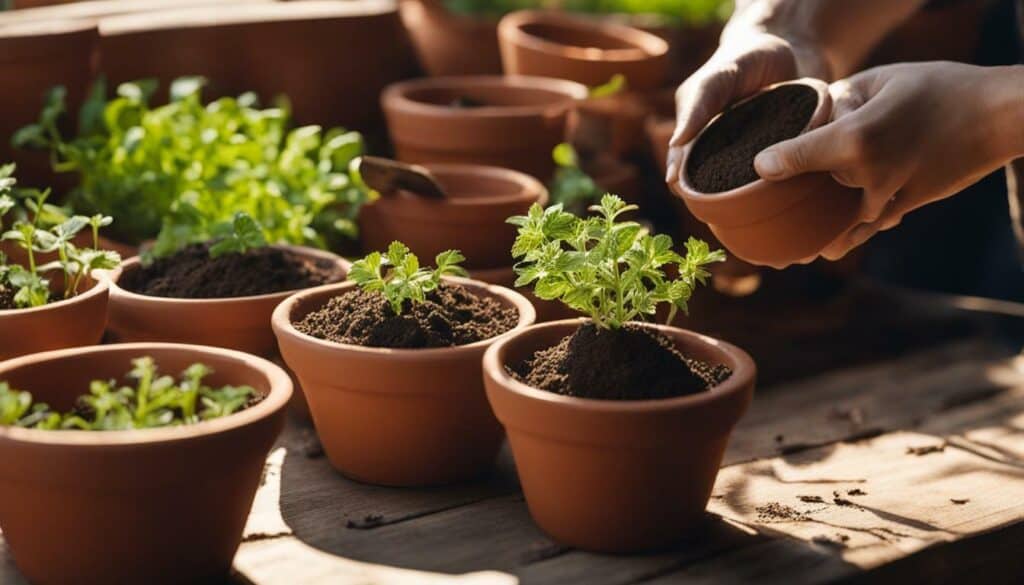 | 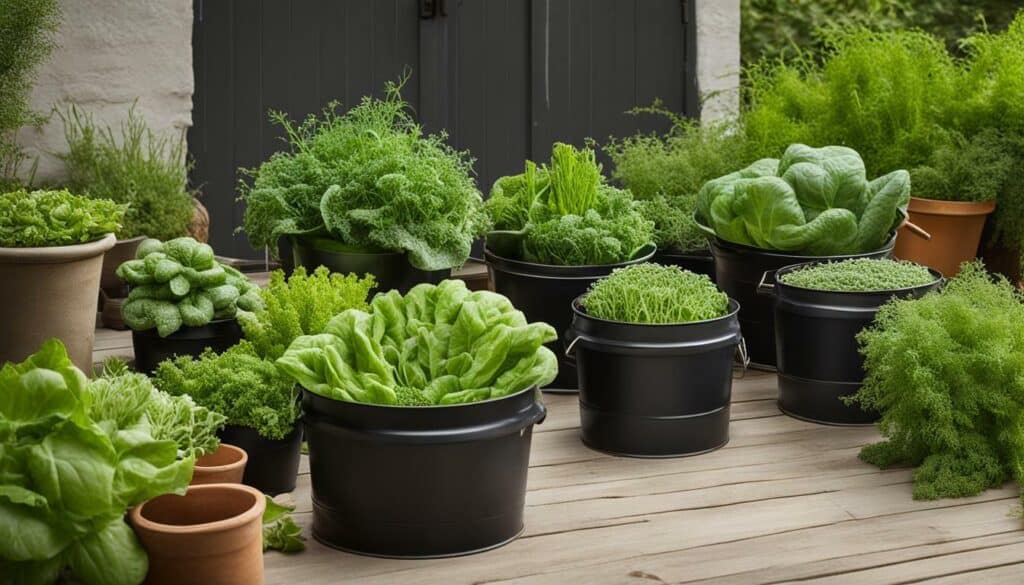 |
|
Herbs are easy to cultivate and don’t require much space. They can be grown in raised beds or pots, making them the perfect choice for container gardening. Some popular herbs to start with include basil, cilantro, parsley, and thyme. |
Container gardening can be done on a balcony or small patio, and it’s a great way to spruce up your outdoor living space. Choose the right container, soil, and plants for your specific conditions, and be sure to water them regularly. Consider vertical gardening if you have limited space. |
With the basics in mind, and armed with the right tools and knowledge, you can successfully start an herb garden and enjoy container gardening. Start small, choose the right plants, and pay attention to your specific growing conditions. With patience and persistence, you’ll be rewarded with beautiful and flavorful herbs and vegetables.
Mulching and Proper Watering Techniques
To promote healthy plant growth and minimize weeds, it’s important to mulch your garden and maintain proper watering techniques based on the needs of your plants. When it comes to mulching, choosing the right type of mulch is crucial. Organic mulch, such as wood chips or straw, can help retain moisture in the soil, suppress weeds, and regulate soil temperature. This is particularly important in hot, dry climates, where soil moisture can be quickly depleted.
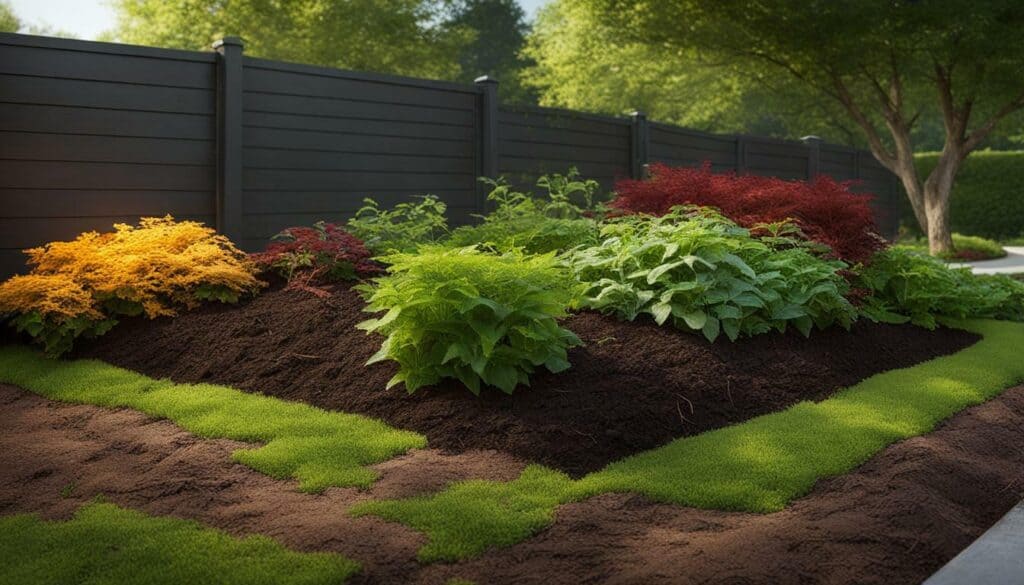
Mulch should be applied evenly around plants, leaving space around the stem to prevent rotting. The ideal thickness of the mulch layer is around two to three inches, which is enough to provide the benefits of moisture retention, weed suppression, and temperature regulation. If the mulch layer is too thick, it can prevent air and water from reaching the roots of the plant, leading to root rot and other problems.
When it comes to watering, it’s important to understand the needs of your plants. Most vegetables require 6 to 8 hours of direct sunlight per day and well-drained soil. It is recommended to water deeply and infrequently, allowing the soil to dry out in between watering. This encourages deep root growth and helps your plants better withstand drought conditions.
The best time to water is early morning or late afternoon when temperatures are cooler. This reduces the risk of evaporation and water loss due to high temperatures. Additionally, knowing your hardiness zone and frost dates can help you choose the right plants and determine when to plant them.
Proper mulching and watering techniques are essential for successful gardening. By taking the time to mulch around your plants and water them properly, you can greatly improve the health and growth of your garden. Remember to choose the right type of mulch, apply it evenly, and water deeply and infrequently to ensure a bountiful harvest of fresh produce.
Troubleshooting Common Garden Issues
Gardeners often encounter various issues along the way, but don’t worry, we’ll guide you on how to address them using organic solutions like herbicides, homemade soap spray, or neem oil.
One common issue gardeners face is pest infestations. Instead of using chemical pesticides, try using organic herbicides, such as vinegar or citrus oil. These are effective in controlling pests without harming the environment. Additionally, you can make your own soap spray using dish soap, water, and oil to keep pests away.
Another issue is fungal diseases, such as powdery mildew or black spot. To combat this, mix neem oil with water and spray on the affected areas. Neem oil is a natural fungicide that can effectively control fungal diseases.
Soil issues can also arise, including nutrient deficiencies or pH imbalances. To amend soil, add organic matter like compost or manure. Testing the soil pH and drainage can also help you determine what nutrients your soil needs.
| Organic Solutions | Usage |
|---|---|
| Organic Herbicides | Effective in controlling pests without harming the environment. |
| Homemade Soap Spray | Keep pests away and protect your garden from diseases. |
| Neem Oil | A natural fungicide that can effectively control fungal diseases. |
By taking these measures, you can troubleshoot common garden issues while maintaining an organic garden. Remember to be patient and persistent, and don’t let setbacks discourage you. With some troubleshooting, your garden can thrive and bring you fresh and flavorful fruits and vegetables.

Conclusion
Starting a garden may seem intimidating at first, but with patience and perseverance, even beginner gardeners can experience the joy and satisfaction that comes with growing their own plants and vegetables. Remember to start small and choose the right location for your garden, ensuring it has ample sunlight and good drainage. Only grow what you and your family will eat, and choose easy-to-grow vegetables that thrive in your local climate. It’s also important to pay attention to your hardiness zone and frost dates when planting. Learning about gardening tools, soil preparation, and plant care will give your garden the best chance of thriving. As with anything, gardening takes practice and patience, so don’t get discouraged if things don’t go perfectly the first time around. With these beginner garden tips, you’re well on your way to getting started with gardening.
What are the Easy Steps to Start a New Garden as a Beginner?
Starting a new garden as a beginner can be an exciting journey. The key is to follow easy steps to start a garden in order to make the process smoother. Begin by selecting a suitable location, preparing the soil, choosing the right plants, and providing proper care. With these easy steps, you’ll be well on your way to creating a thriving garden.
What Are the Essential Planting Tools and Supplies Needed for Beginners?
For beginners looking to embark on a green thumb journey, having the right planting essentials for green thumb is crucial. Some must-haves include a trowel for digging, a pair of gardening gloves to protect your hands, and a watering can to provide hydration to your plants. Additionally, invest in a quality set of pruners to trim unwanted branches and a gardening apron to keep tools easily accessible. Starting with these essential tools and supplies will help ensure a successful gardening experience.
FAQ
Q: What is the best location for my garden?
A: Choose a sunny location with well-drained soil and minimal wind.
Q: How do I decide what to grow in my garden?
A: Start with a small garden and only grow what you know you and your family will eat.
Q: What are some easy vegetables to grow?
A: Consider growing lettuce, green beans, radishes, tomatoes, zucchini, peppers, beets, carrots, chard, spinach, kale, and peas.
Q: Should I consider the availability of vegetables at my grocery store?
A: Yes, it’s important to consider the availability of vegetables at your grocery store and choose plants that grow well in your area.
Q: When should I plant my vegetables?
A: Plant vegetables at the right time based on whether they are cool-season or warm-season plants.
Q: What kind of seeds should I use?
A: Use high-quality seeds and consider your hardiness zone to choose the best plants for your area.
Q: How can I avoid planting too early or too late in the season?
A: Know your frost dates to avoid planting too early or too late in the season.
Q: What tools do I need for gardening?
A: Start with basic gardening tools and gradually add more as your garden grows.
Q: What gardening terms should I know?
A: Understand common gardening terms to make gardening easier.
Q: How do I prepare my soil?
A: Prepare your soil by amending it with organic matter and testing its pH and drainage.
Q: How do I start seeds and care for seedlings?
A: Learn about seed starting, plant propagation, and caring for seedlings and young plants.
Q: Should I consider starting an herb garden or growing vegetables in containers?
A: Yes, consider starting an herb garden or growing vegetables in containers for more options.
Q: Why should I mulch my garden?
A: Mulch your garden to suppress weeds and conserve moisture.
Q: How do I water my garden properly?
A: Water your garden properly and maintain good watering practices for different types of plants.
Q: How can I address common garden issues?
A: Address issues in the garden with organic herbicides, homemade soap spray, or neem oil.
Q: Is gardening a challenging task?
A: Remember that getting started with gardening takes patience and perseverance, and even experienced gardeners face challenges.
Source Links
- https://miraclegro.com/en-us/gardening-101/10-top-gardening-tips-for-beginners.html
- https://www.almanac.com/vegetable-gardening-for-beginners
- https://www.gardeningknowhow.com/garden-how-to/info/beginners-guide-to-gardening.htm
- https://growinginthegarden.com/gardening-for-beginners-how-to-start-a-garden-in-8-simple-steps/
- https://commonsensehome.com/start-a-garden/
- https://sebsnjaesnews.rutgers.edu/2020/04/choosing-the-right-location-for-your-vegetable-garden/
- https://www.gardensthatmatter.com/choose-garden-location/
- https://morningchores.com/vegetable-garden-location/
- https://www.bhg.com/gardening/yard/garden-care/ten-steps-to-beginning-a-garden/
- https://gardenerspath.com/how-to/beginners/first-vegetable-garden/
- https://www.bhg.com/gardening/vegetable/vegetables/planning-your-first-vegetable-garden/
- https://grocycle.com/starting-a-market-garden/
- https://www.familyhandyman.com/article/when-to-start-a-garden/
- https://www.burpee.com/blog/7-signs-of-when-to-start-planting-a-garden.html
- https://seedsnsuch.com/blogs/gardeners-greenroom/how-to-find-your-hardiness-zone-and-why-it-s-important-to-your-garden-s-success
- https://gardengoodsdirect.com/blogs/news/all-about-planting-zones
- https://www.almanac.com/gardening/frostdates
- https://www.marthastewart.com/8301730/what-is-first-last-frost-date
- https://www.gardenary.com/blog/plants-you-can-grow-before-your-last-frost-date
- https://www.gardendesign.com/how-to/tools.html
- https://www.almanac.com/gardening-tools-guide
- https://www.eatingwell.com/article/17068/the-only-tools-you-need-to-start-a-garden/
- https://www.almanac.com/soil-preparation-how-do-you-prepare-garden-soil-planting
- https://joegardener.com/podcast/how-to-start-care-for-seedlings-indoors/
- https://www.planetnatural.com/garden-soil/
- https://www.countryliving.com/gardening/a43329616/how-to-start-a-herb-garden/
- https://grocycle.com/container-herb-garden/
- https://www.gardenary.com/blog/how-to-grow-herbs-in-a-small-space
- https://extension.umn.edu/how/watering-vegetable-garden
- https://www.creativevegetablegardener.com/watering-vegetable-garden/
- https://www.hgtv.com/outdoors/gardens/planting-and-maintenance/the-proper-way-to-water-your-garden
- https://donotdisturbgardening.com/17-common-garden-problems-how-to-fix-them/
- https://growinginthegarden.com/garden-troubleshooting-guide-how-to-identify-solve-common-garden-problems/
- https://www.bobvila.com/slideshow/10-common-garden-problems-and-how-to-fix-them-47754
- https://content.ces.ncsu.edu/home-vegetable-gardening-a-quick-reference-guide
- http://lizfabry.blogspot.com/2012/11/garden-update.html?m=1

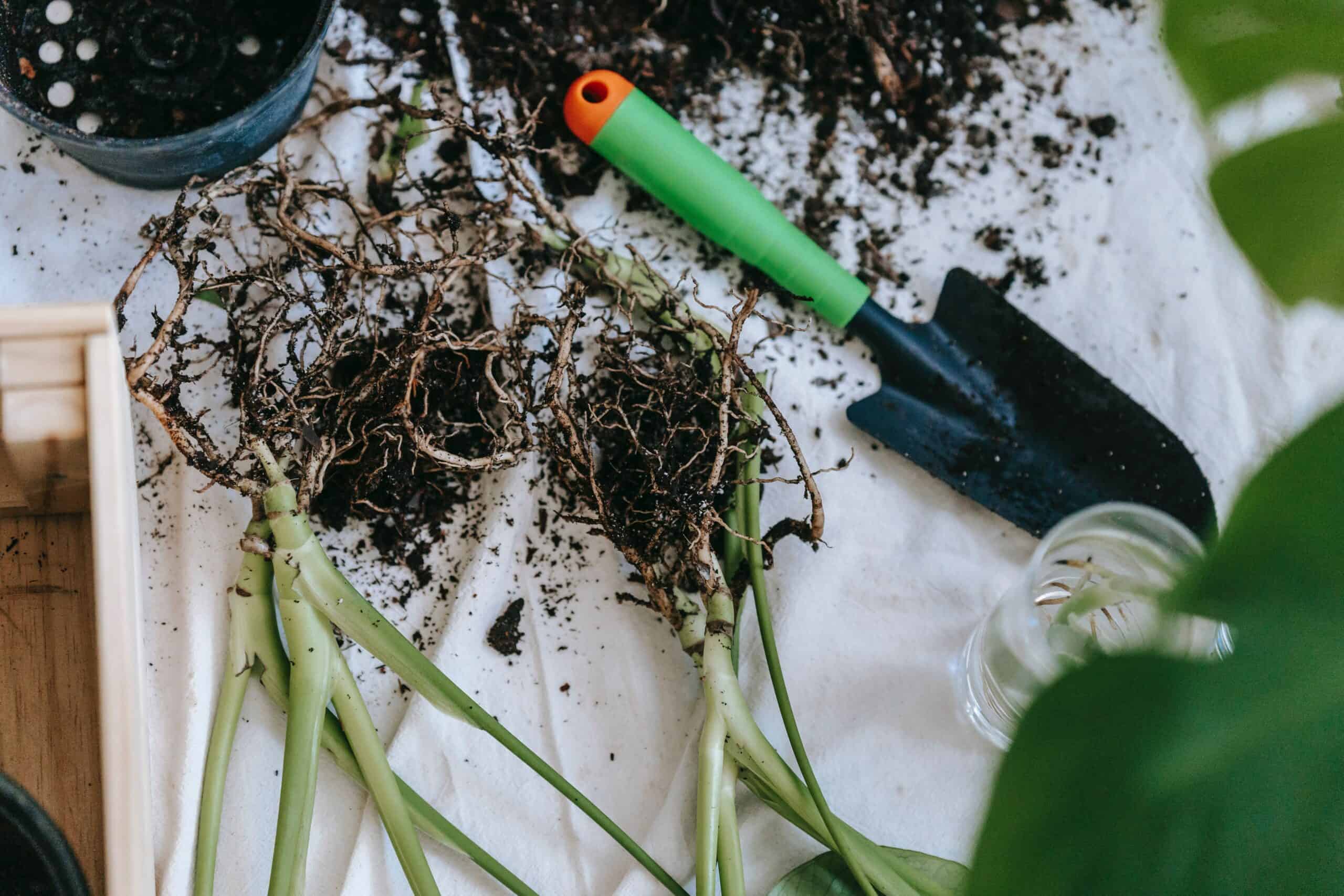



Leave a Reply